June Graham, Guest Author
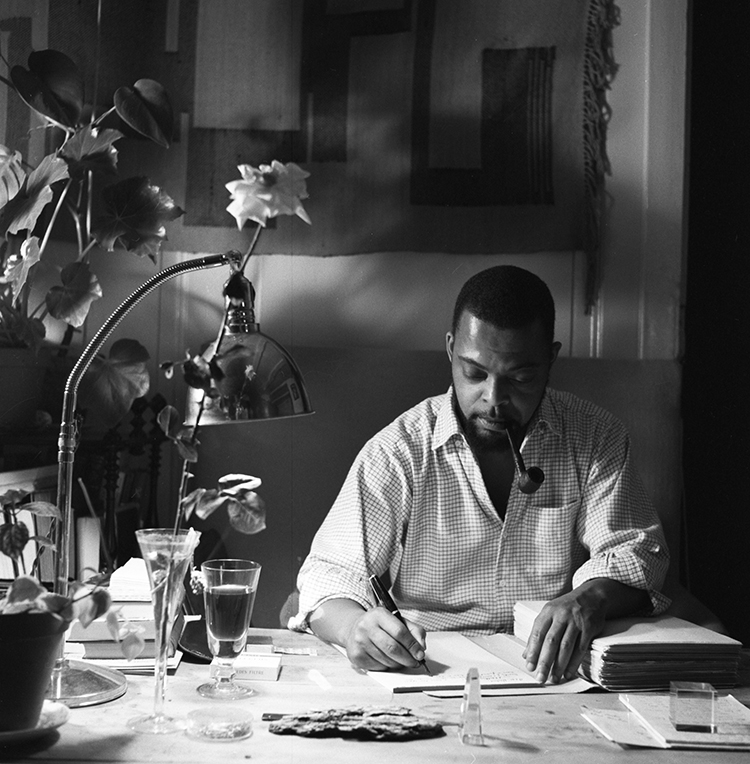
Vincent O. Carter working at his home in Bern. ©P. Kräuchi
In June 2023, I travelled to Kansas City to research the early life of Vincent O. Carter, an African American writer who was born there in the North End in 1924. He was drafted into the Army at age 19 and sent to France. His unit arrived in Normandy shortly after the D-Day invasion at a time when all American troops, regardless of skin colour, were greeted as heroes.
When Carter returned to the U.S., the G.I. bill enabled him to study English at Lincoln University. After graduating in 1950, he worked in an automobile plant in Detroit and saved money to return to Europe. Arriving in Paris in spring 1953, he found that the French were no longer so friendly to Americans, and that racial prejudice was also at work. Unable to get a decent hotel room in Paris, Carter moved on, eventually settling in Bern, Switzerland, where he stayed until his death in 1983.
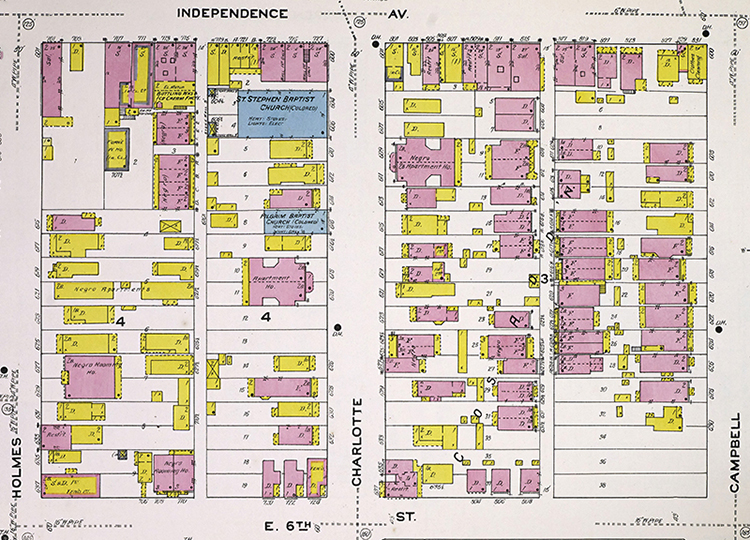
Carter’s first home was on Cottage Lane (located between Charlotte and Campbell streets) in a predominantly Black neighbourhood on the north side of downtown.
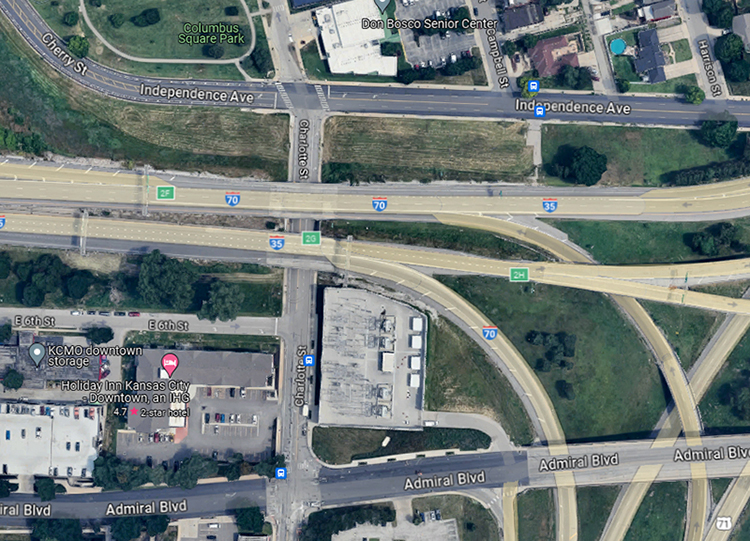
Today, the neighbourhood is no more, replaced by the northeast corner of the downtown expressway loop. Google Maps
Many years later, when I was working as a climate scientist at the University of Bern, I discovered a second-hand copy of The Bern Book. It is a memoir of Carter’s first years in the Swiss capital. As a white Scottish woman, my adjustment to life in Bern was in many ways much easier than his. However, I was able to connect with his sharp observations about living in Switzerland. When Carter wrote that the apartment walls were so thin that they were ‘indecent’, I knew exactly what he was talking about. Switzerland is a crowded place where all available land is occupied. Carter wrote about seeing a small, cultivated patch of onions between railway tracks and shortly afterwards, when I was travelling by train, I spotted a patch of vegetables close to a railway intersection.
Carter also wrote a novel about growing up in Kansas City. The novel was completed in the early 1960s, but it was rejected by over 40 publishers. Carter did not live to see its eventual publication in 2003 when Chip Fleischer of Steerforth Press, who is himself a native of Kansas City, brought it out under the title Such Sweet Thunder. As I walked around Bern noticing landmarks Carter had written about in The Bern Book, I wondered if he had become bitter as rejection after rejection rolled in. Eventually I contacted his Swiss partner, Liselotte Haas and asked her if he found peace.
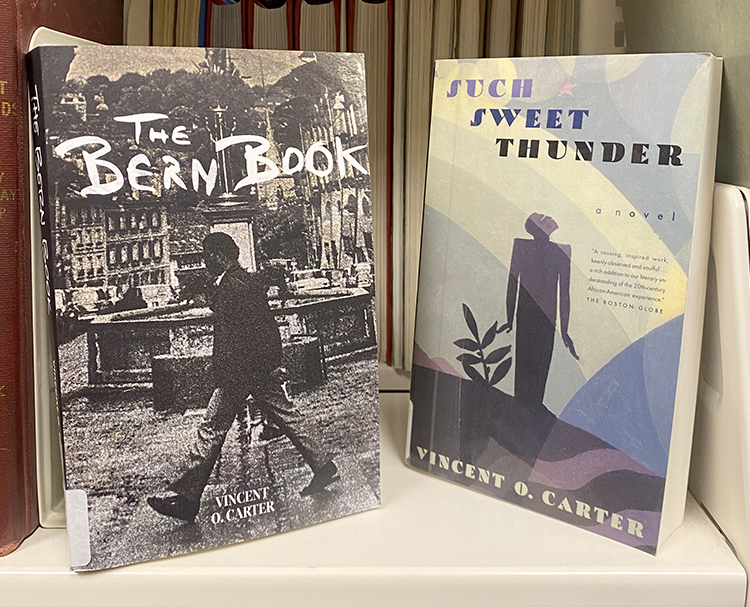
Copies of Carter’s books in the Missouri Valley Room.
“Mein Gott, hat er Friede gefunden!“ she answered — My God, did that man find peace. She told me that during the last ten years of his life Carter embarked on a spiritual journey which brought him to India. Although he had had no previous training, he also began drawing and painting and had his work featured in several exhibitions.
When I returned to Scotland with my family in 2009, I kept in touch with Liselotte, but it took almost ten years for me to realise that it was time to record her stories and the stories of other people who had known Carter. The summer before the COVID-19 pandemic, I returned to Switzerland with a voice recorder and scanner. Since then, I have been writing about the thirty years which the author spent in his adopted city of Bern.
It was always going to be more challenging for me to research the early part of his life, both because this is further back in time and there are few, if any, direct witnesses still alive, and also because I knew very little about Kansas City and its Black community. However, when it came to planning my trip, I had help from both Chip Fleischer, Carter’s publisher, and from Steve Paul, who researched articles on Carter’s life when he worked for The Kansas City Star.
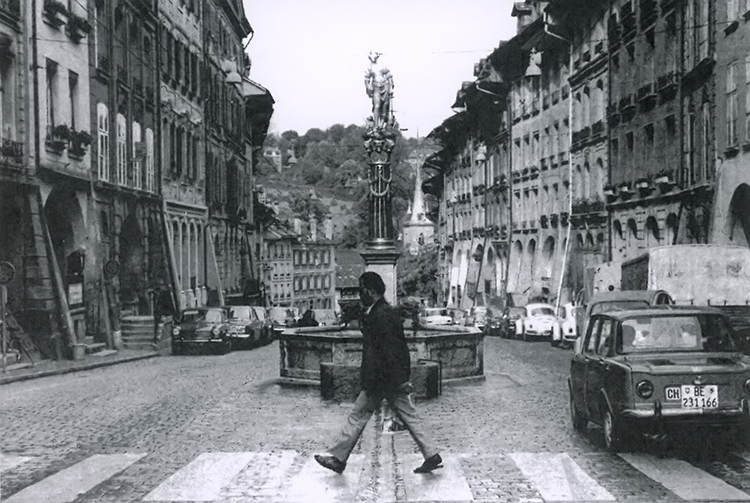
Carter crosses a street in Bern. ©P. Kräuchi
About a month before my trip, I contacted the Missouri Valley Room at Kansas City Public Library and filled out a form with facts about Carter’s life, such as where he attended school or went to church. I also included other topics relevant to his life. After taking four flights over two days to reach Kansas City from my home on a Scottish island, the library was one of my first ports of call. I discovered there was a cart waiting for me that Michael Wells, of the Missouri Valley Room team, had prepared. As well as looking out school yearbooks and vertical files on various topics, he had included books relevant to the history of Kansas City’s Black community.
During my first week in Kansas City, I have to admit that I rather neglected that cart in the library while I was visiting other places. These included a visit to Lincoln High School (now Lincoln Preparatory Academy) where Ron Walton showed me around the alumni room. He not only told me many things about the high school, but also shared stories about the black community in the 1940s and ‘50s. The Black Archives of Mid-America had also looked out some material for me including recordings from the 1970s of people in the Black community sharing their memories of an earlier time.

The Lincoln High School library, where Vincent O. Carter doubtless spent many hours.
The hours I spent looking through the library were very worthwhile. Since Carter grew up in a poor and relatively unknown family, there are very few direct records of his childhood. When I came across his name on the program for the second R.T. Coles Promotion Exercise on June 9, 1938, I felt like I had found a gold nugget. Such Sweet Thunder is a fictionalised account of his childhood with thinly disguised names and places: R.T. Bowles instead of R.T. Coles, and St. John’s Baptist Church instead of St. Stephen’s Baptist Church, for example. My task, I decided, was to discover more about the real-life places and events described in his novel.
Other times, I was not expecting to find Carter’s name, rather trying to understand the forces which shaped his childhood. The library looked out some interesting materials, such as Race, Real Estate And Uneven Development: The Kansas City Experience 1900-2010, by Kevin Fox Gotham, which traces the development of the segregated housing situation; and The Spirit of Freedom, a book published by the Office of Housing and Community Development in 1978 that records the history of the Black community in Kansas City. I also made use of the microfilm archive of The Call newspaper to find articles on events which affected Carter’s life, such as his high school graduation.
Vincent O. Carter in the 1941 Lincoln High School yearbook.
I found the Missouri Valley room to have a peaceful almost timeless atmosphere. The silence was hardly ruffled when people came in to look at books or ask questions. The staff were all very helpful, showing me how to use the high-tech scanner, setting up the micro-film reader, looking out books, answering questions and making suggestions, such as searching the old city directories. I got the impression that they were not only good at following clues to find a piece of information, but also enjoy doing this. One staff member even helped me with some genealogy leads.
Now I am back in Scotland. After a busy summer doing activities with my teenage sons, school is starting, and the wet and windy weather is with us. As I try to settle myself into looking through the materials I gathered in Kansas City, a part of me wishes that I could not only research but also write in the peaceful atmosphere of the Missouri Valley Room. I will go there in my mind as I try to once again absorb myself in the story of Vincent O. Carter’s childhood. I would welcome hearing from anyone with memories of Carter or his parents Joseph and Eola Carter, and you can reach me at https://junegraham.wordpress.com/about/
Short Biography – June Graham worked at the University of Bern from 2002 to 2009 on a Swiss national climate change project. She now lives in the Scottish Highlands where she works as a part-time Gaelic development officer. In 2019, she was selected for a Scottish Book Trust Gaelic New Writer’s Award and her middle-grade novel ‘An Cat Coigreach /The Foreign Feline’ will be published next year. She is currently working on a biography of Vincent O. Carter and has received mentoring support through her local arts centre, An Lanntair, as well as financial support through Creative Scotland.

